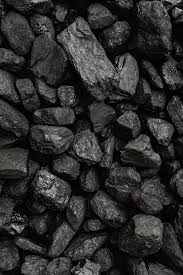Date: 25 Jan 2020
To stop this from happening we’re going to give you a run-down of some of the best ways to filter odors – active carbon filters. These filters are here to stay and are the most-used method to get rid of odors in indoor grows; they’re super easy to use and install. You’ll need to keep a few parameters in mind when installing your filter. Keep reading to find out how they work and what you need to know before getting one.
What’s a carbon filter?
It’s all in the name – odor filters essentially get rid of any odor or aroma that passes through them, although some types of filters can also get rid of toxic particles.
When we say filter, you might be thinking of a typical fish tank filter; an extractor fan with some sort of cover on one end of it such as a sponge or a simple cloth cover. Well, it’s a similar system; odor filters are usually made out of polyester or spongey fibers, as well as other types of porous materials, as well as activated carbon.
What’s activated carbon?
Carbon or charcoal is a naturally absorbent material thanks to how porous it is, even without being activated. When activated it is one of the most absorbent materials on earth, used to filter both air and water. It can absorb almost any type of material although it works best with natural or organic elements.

Activated carbon can be found in various formats; powdered, in granules and in pellets. Depending on the format, it can be used to filter air, gas or water. Activated carbon (or charcoal) is also used in cosmetics, for food purposes and for treating cases of severe intoxication.
Activated carbon uses:
- Water purification (osmosis filters, fish tanks etc.)
- Air purification (vents, air conditioners etc.)
- Odor filters (extractor fans, filters for growing etc.)
- Gas filters (gas masks, polluted areas etc.)
- Cosmetics (cleansers, makeup removers etc.)
- Dietary supplement (although there are side effects)
- Can treat intoxication
- Activated Carbon Filter for Grow Room
- Activated carbon filters come in various different formats. For example, the filters used in cooked tend to be thick plaques that contain porous fabrics that have been enriched with activated carbon. When it comes to carbon filters for ventilation ducts, they come in boxes which have various strips of that same fabric and activated carbon. However, filters come in a tubular container and contain a special amount of activated carbon pellets or granules.
Activated carbon filters for growrooms are known for their cylindrical, tube shape as well as their double layering of activated carbon, designed to make any air that flows through it go through the activated carbon for the best possible filter. It has a large amount of holes on the outer layer that allows for maximum air flow.
Carbon filters for growers tend to come in a sort of sock which stops any dirt from getting in and obstructing the air flow, which would reduce the amount of odor filtered and could be incredibly damaging for your plants. This increases the lifespan of your filter, allowing it to stay functional until the last gram of carbon is used up.

Maintenance:
Lastly, you’ll also need to do regular maintenance on your filter system just to make sure that it’s working properly. You’ll need to periodically check the odor sock and the activated carbon inside. We recommend removing the sock every two months in order to wash it or simply replace it if it’s seen better days – make sure to check the carbon too, you don’t want it compacting inside. The best way to do this is placing it upwards on the ground and hitting it a couple of times lightly to make sure the carbon is moving around inside there.













Post comment